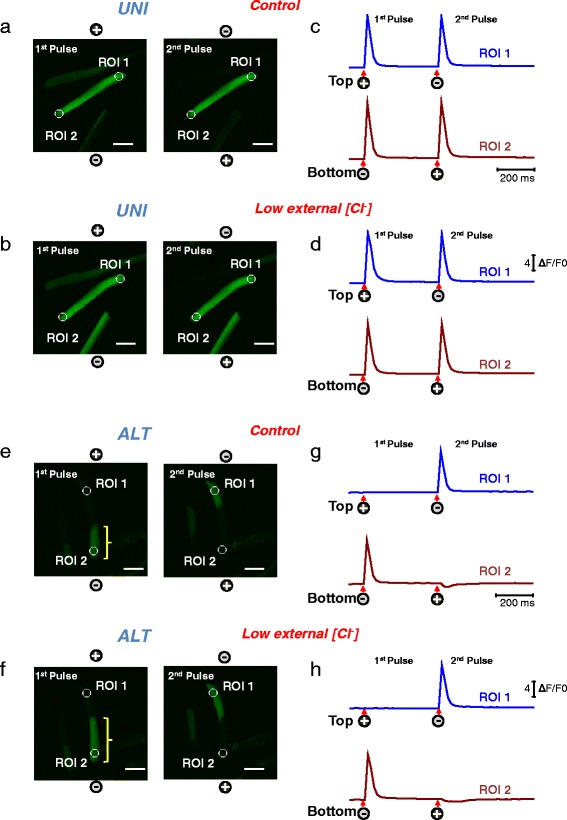Fig. 5.

Myofibers with UNI or ALT responses challenged with a low [Cl−] extracellular solution exhibit modest alterations on excitability. Myofibers with uniform or alternate responses were loaded with rhod-2 and their Ca2+ responses to electrical stimulation were recorded before and after the perfusion with a low [Cl−] external solution. Spatio-temporal properties of electrically induced Ca2+ transients in myofibers that exhibited uniform or alternate responses in a physiological recording solution (a UNI, e ALT) and after treatment with a low [Cl−] external solution (b UNI, f ALT). Rhod-2 signals were imaged and analyzed as in Fig. 1. Scale bars in a, b, e, and f are 100 μm. UNI myofibers displayed a global Ca2+ transient in response to pulses of alternate polarity, and the perfusion of the low [Cl−] external solution produced negligible effects on the properties of the Ca2+ transients. Similarly, ALT myofibers displayed only local non-propagated responses at alternating ends upon application of pulses of alternate polarity and perfusion of the low [Cl−] external solution produced negligible effects on the overall ALT phenotype; however, in ALT fibers exposed to low [Cl−] solution, the longitudinal spread of the electrically elicited Ca2+ transient is increased (compare brackets length in e and f). c, d, g, and h show the time course of the rhod-2 fluorescence measured at the ends of the myofibers. Circles labeled as regions of interest ROI 1 (myofiber’s upper end, blue trace) and ROI 2 (myofiber’s lower end, dark red trace) show the locations used to measure the time course of the rhod-2 fluorescence. Arrows and signs under the traces indicate both the polarity and the time when the pulses were applied. Vertical scale: ΔF/F0 = 4; horizontal scale: time 200 ms
